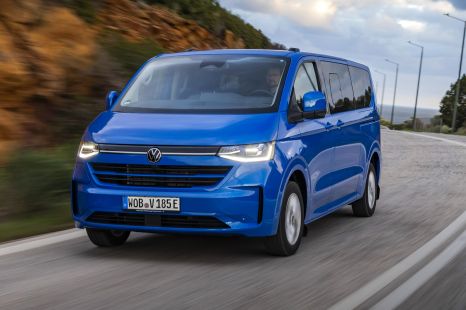

Dave Humphreys
2025 Volkswagen Transporter review: Quick drive
5 Months Ago
The sportiest-looking van ever? Probably! Meet the Ford E-Transit Custom MS-RT, a humble electric van with an angry streak.

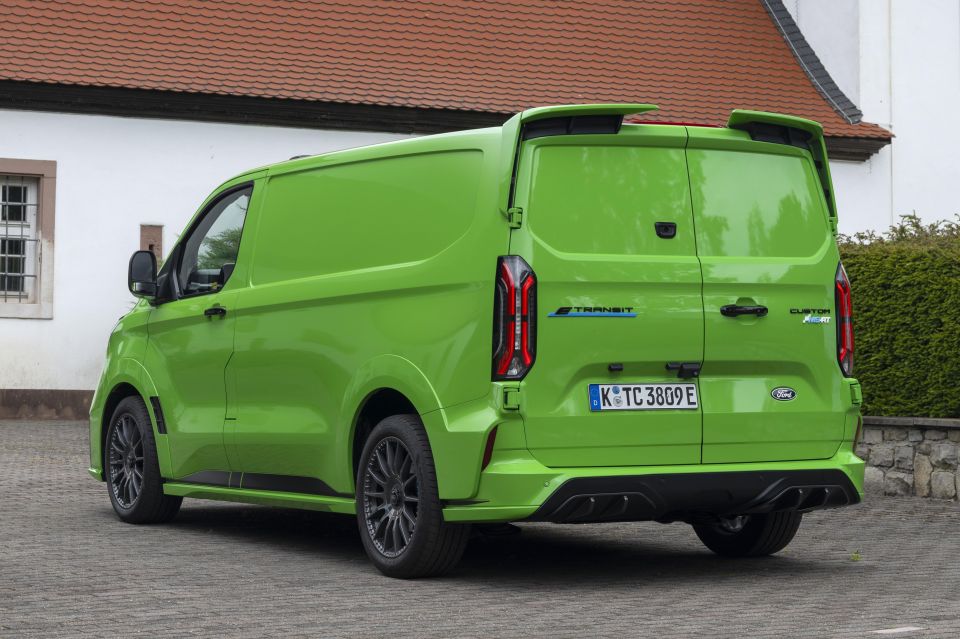

Quickly see how this car stacks up against its competition. Select any benchmark to see more details.
Where expert car reviews meet expert car buying – CarExpert gives you trusted advice, personalised service and real savings on your next new car.
The Ford Transit Custom Sport is already a pretty wild-looking van, with its racing stripes, body kit and darkened alloy wheels – but the Ford E-Transit Custom MS-RT almost makes it look tame.

Yes, Ford has introduced yet another racy-looking van, a niche other brands don’t even bother with.
The MS-RT treatment is available across all Transit Custom powertrains in the UK and Europe, but only the MS-RT version of the electric E-Transit Custom gets more power. That’s the one we recently drove in Germany.
Sadly, the MS-RT isn’t coming to Australia, even though Ford Australia says the Sport has been a “significant contributor” to Transit Custom sales.
MORE: 2025 Ford E-Transit Custom review
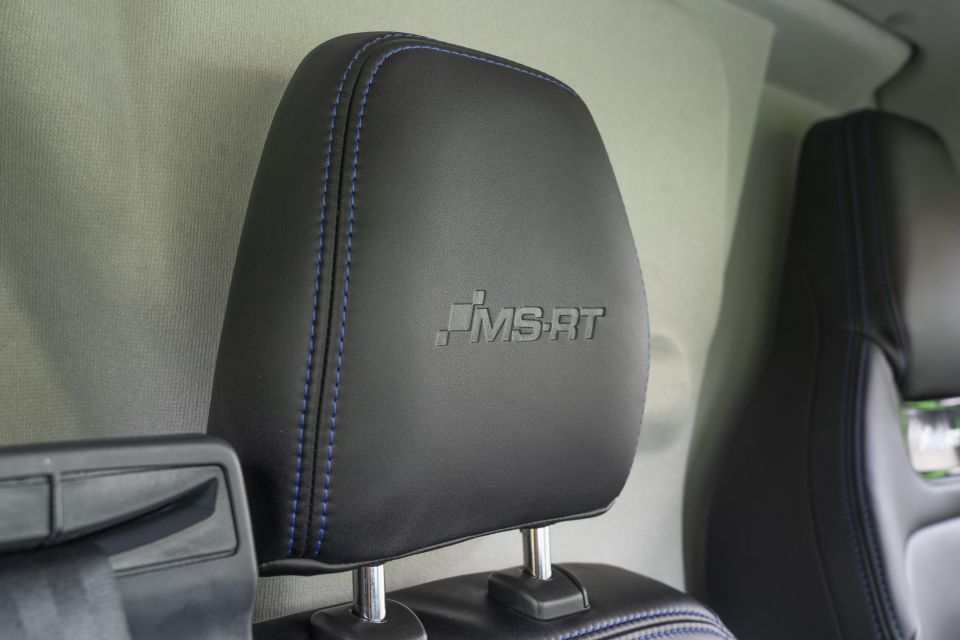
You may be wondering: “Just what does MS-RT mean? Manufacturer’s suggested retail… thrice?”
MS-RT is an offshoot of Ford’s rally partner M-Sport, and is based in the UK. It specialises in “sport-inspired commercial vehicles”, and has worked over Rangers and Transit Customs.
You may have seen the Ranger MS-RT, a lowered “street truck” version of the turbo-diesel V6 Ranger. Sadly, it too is for UK and European audiences only.
Regardless of what’s powering it, the MS-RT looks like a Focus RS pumped up with more air.
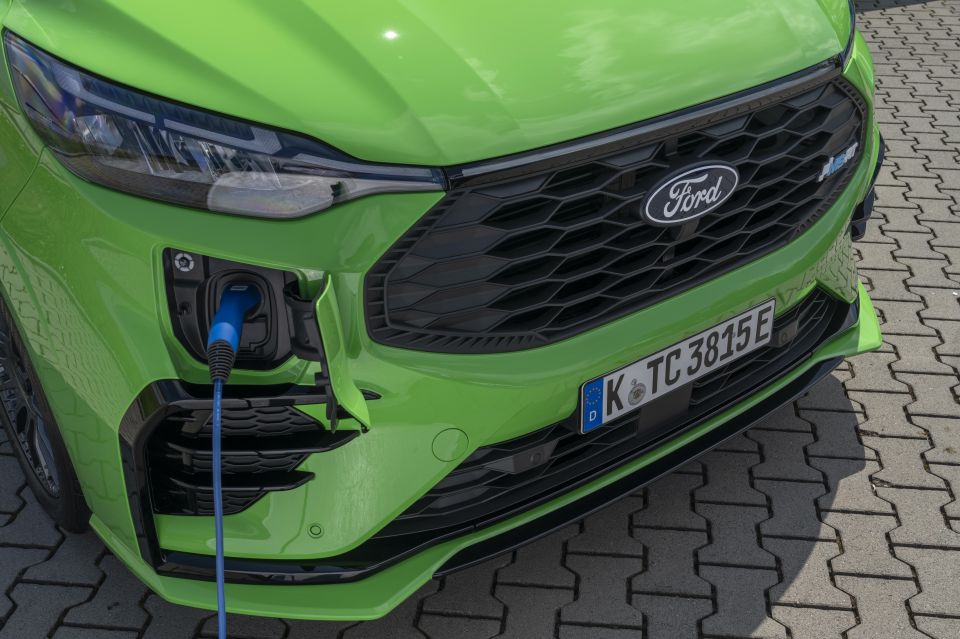
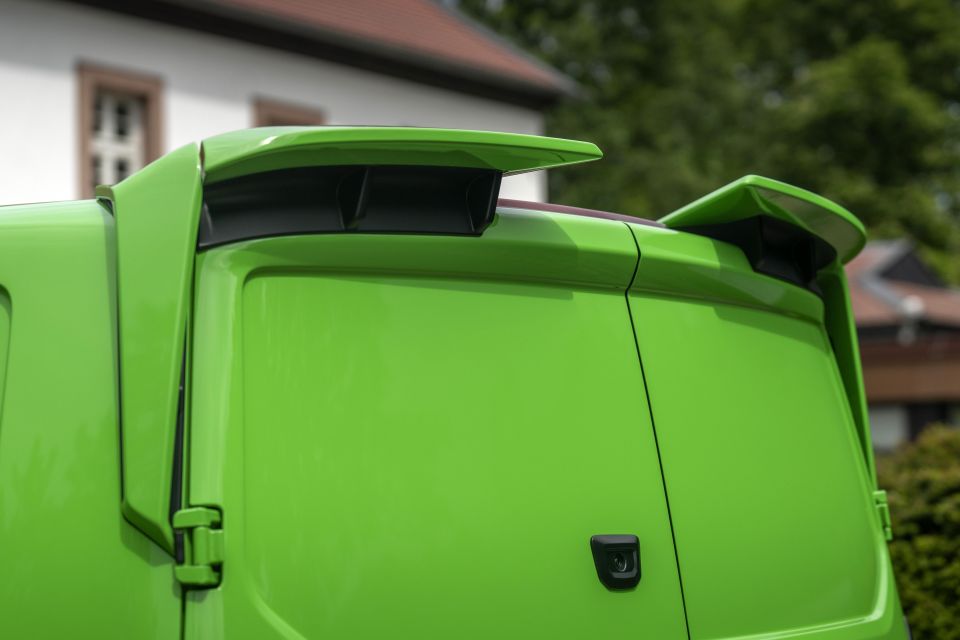
There’s a new front bumper with an integrated spoiler; side skirts; and a unique rear bumper with an integrated diffuser.
It rides on 19-inch anthracite-finish alloy wheels wrapped in 235/45 R19 Goodyear Eagle Sport tyres. Behind these wheels sit brake calipers finished in MS-RT’s signature blue.
It’s hard to dress up a box, but somehow the team at MS-RT have managed to give this cargo hauler a convincing makeover.
The crowning touch is the large rear spoiler, which on vans with barn doors is split in two. If you want, you can even add some decals – you know, if you find the MS-RT too subtle.
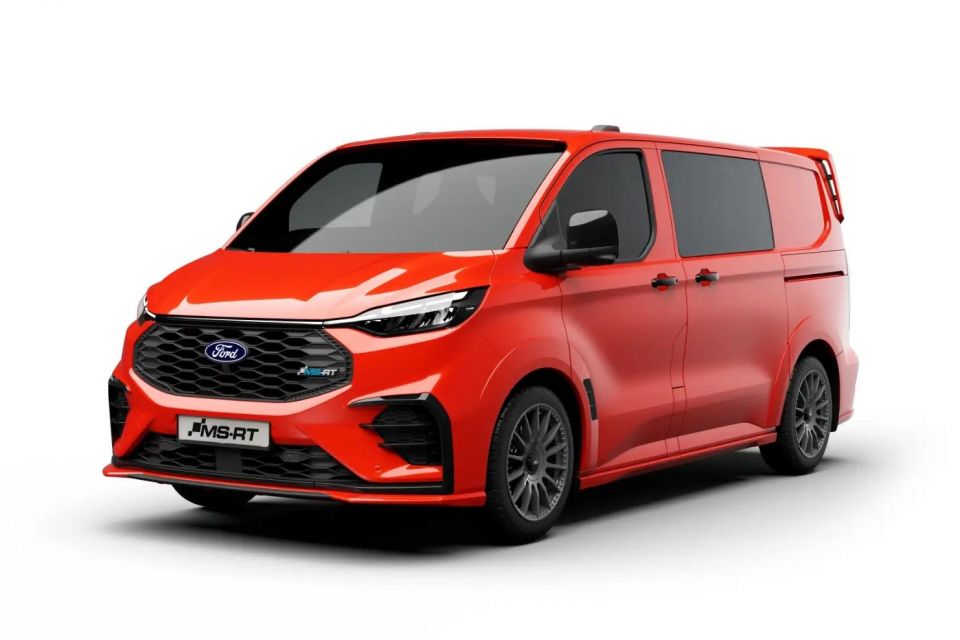
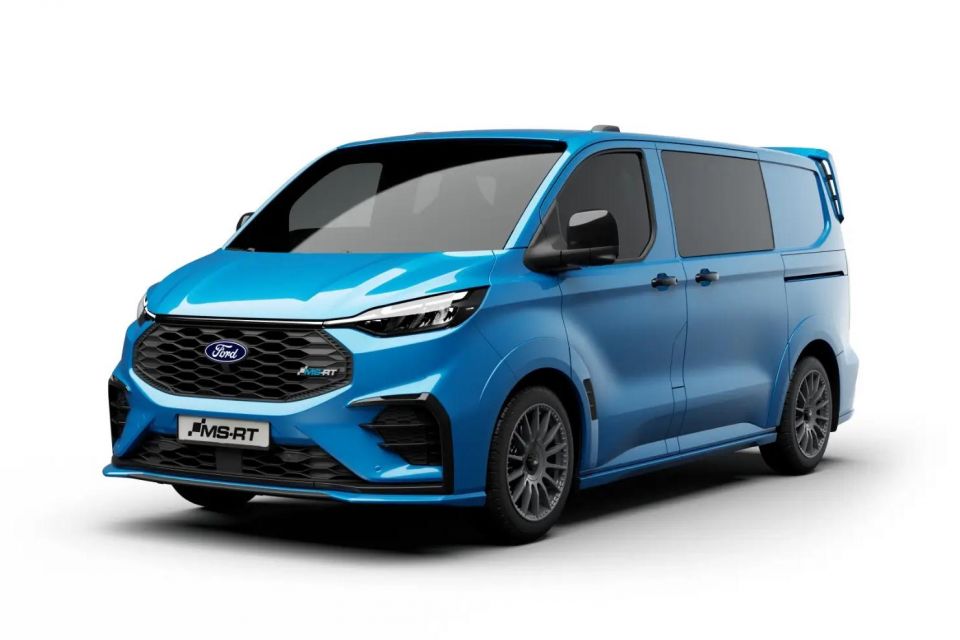
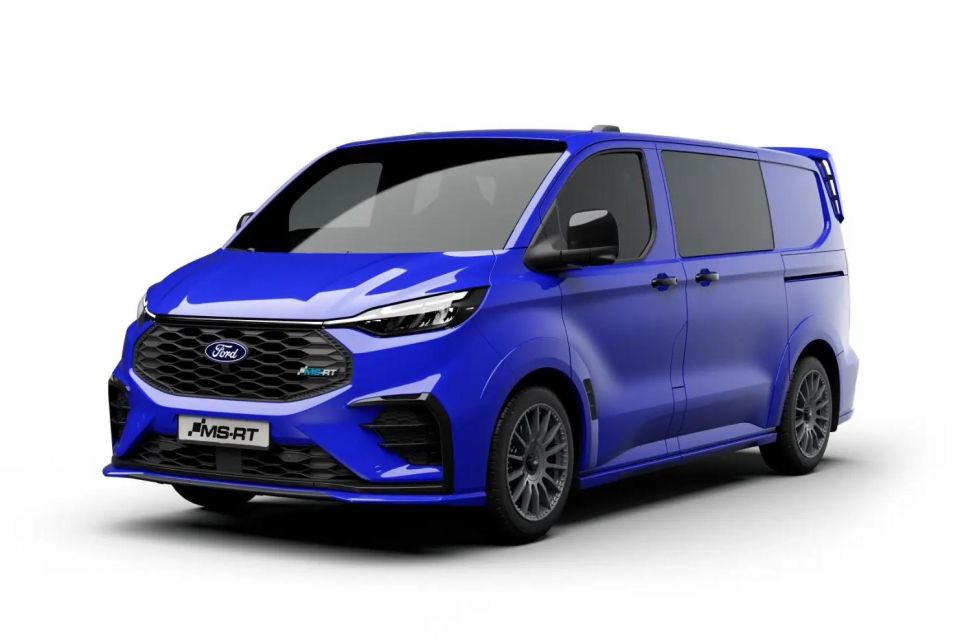
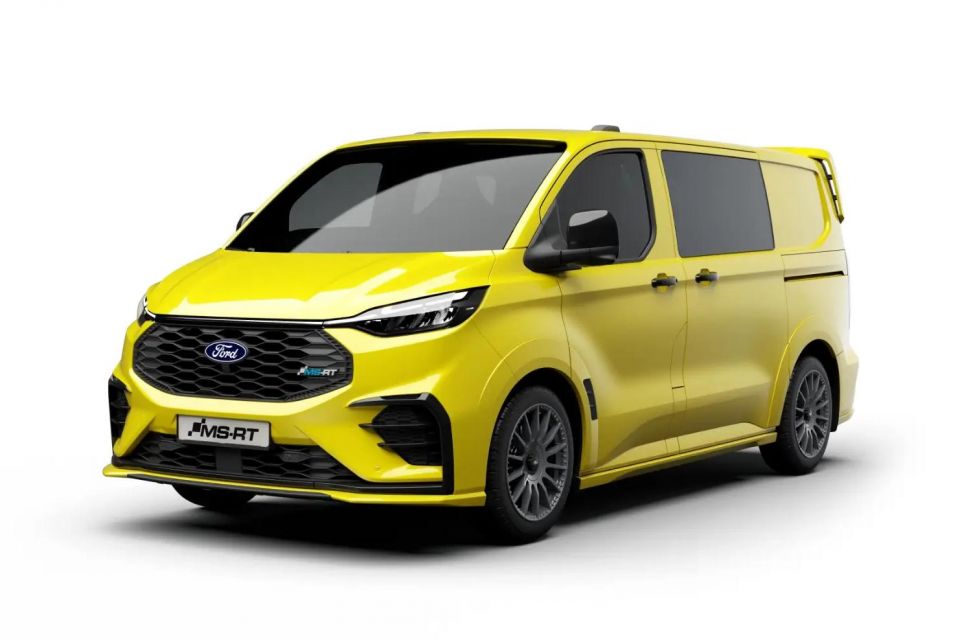
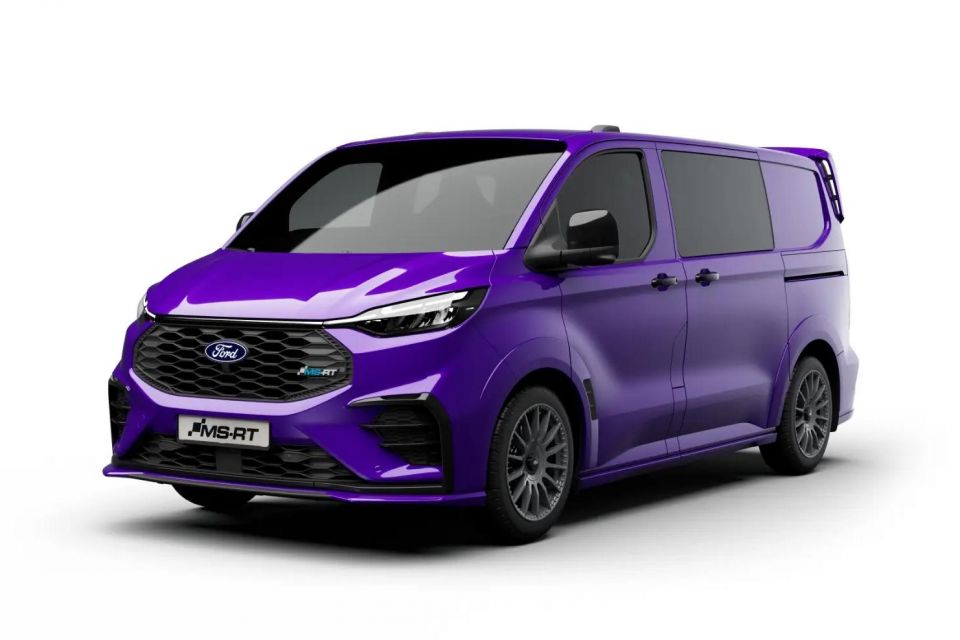
You can specify the MS-RT in the usual Transit Custom colours: Frozen White, Grey Matter, Magnetic, Agate Black, Artisan Red, and Digital Aqua. But that would be bloody boring, wouldn’t it?
If you’re buying this outlandish van, you need to properly commit and buy one of the following lurid shades:
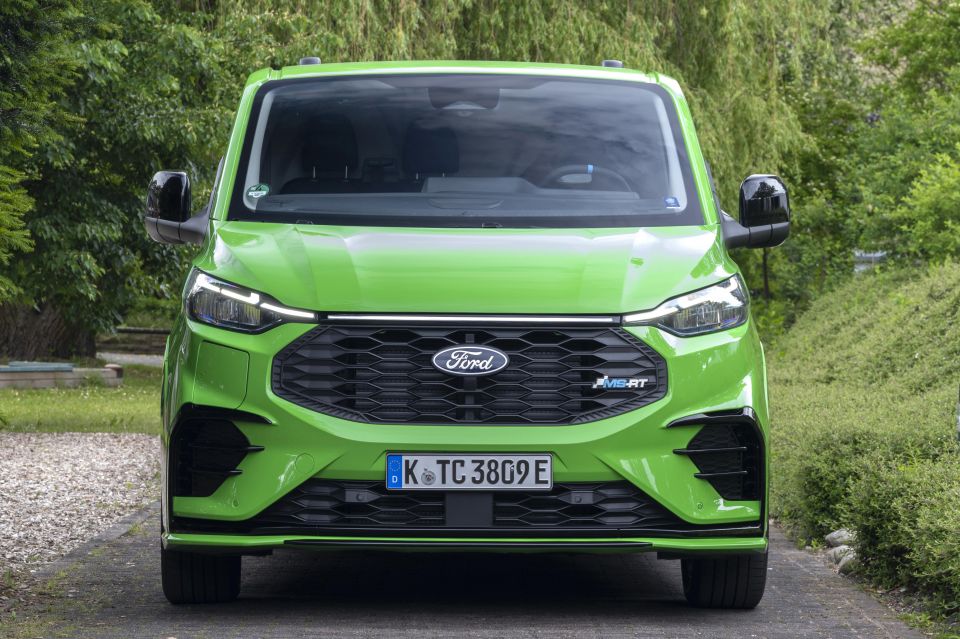
Once they roll off the production line in Turkey, Transit Customs are sent to a new facility at Ford Dagenham Estate in the UK to undergo final assembly and become MS-RTs.
You can not only get the MS-RT treatment with every Transit Custom powertrain, you can also get it on panel van and double-cab configurations and in both lengths.
Ford has given the Transit Custom’s interior a makeover, too.
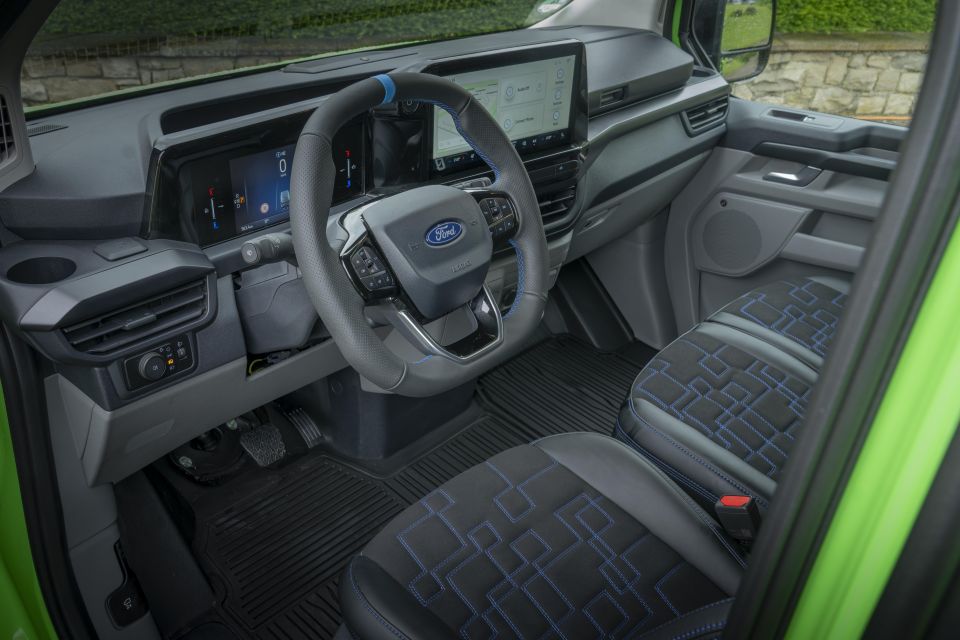
There are sportier-looking seats, with significantly more bolstering for the driver’s seat. It’s comfortable and it hugs you in place, and there are plush armrests.
All seats are finished in leatherette and suede trim with blue contrast stitching. This blue stitching can also be found on the chunky, squared-off, leatherette-wrapped steering wheel which feels terrific.
Otherwise, the interior is the same as all new Transit Customs – and that’s not a bad thing.
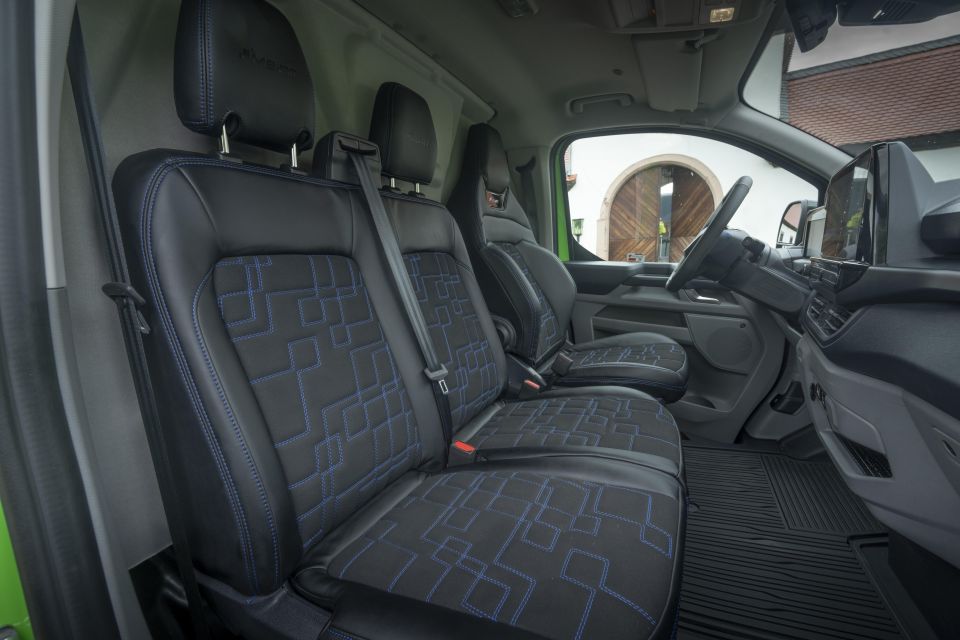
We have one gripe: the column shifter feels far too much like an indicator stalk, which is a recipe for the occasional awkward shift into neutral while driving.
However, the use of a column shifter has allowed Ford designers to flatten the centre stack. That makes it easier to slide across the front.
The new Transit Custom family also has a completely flat floor up front, regardless of powertrain.
Ford has moved the passenger-side airbag to the roof, freeing up space for another glove compartment. There’s storage atop the dashboard, deep bottle holders in the doors, and multiple cupholders.
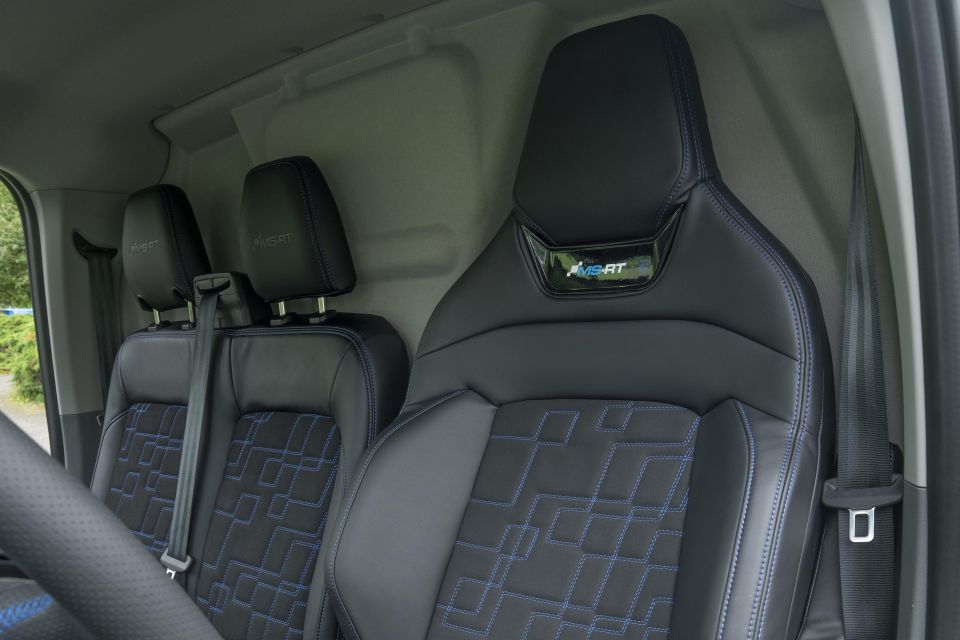
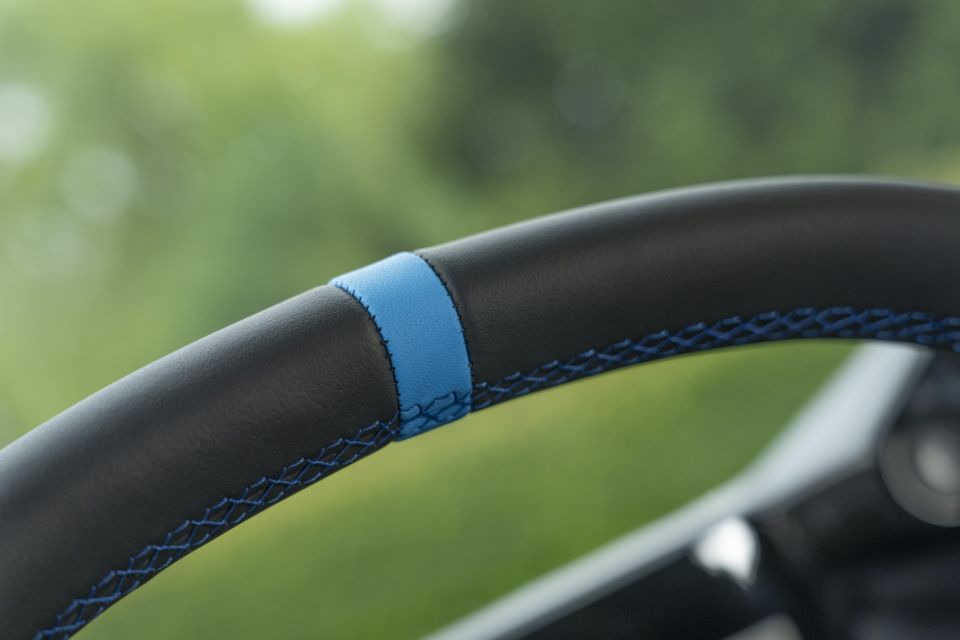


The company has ditched physical climate controls in favour of touchscreen-based adjustment, however it has fortunately left these on-screen keys permanently anchored.
That means regardless of what menu you’re in, you can easily adjust functions like the cabin temperature.
The expansive 13-inch infotainment touchscreen also features wireless Apple CarPlay and Android Auto, and is helpfully angled towards the driver. It sits next to a 7.0-inch digital instrument cluster, which is clear and easy to read.
Ford’s Pro Power Onboard, which allows up to 2.3kW of power to be delivered from the battery to power appliances and tools, is also available. The outlet for this is on the D-pillar.
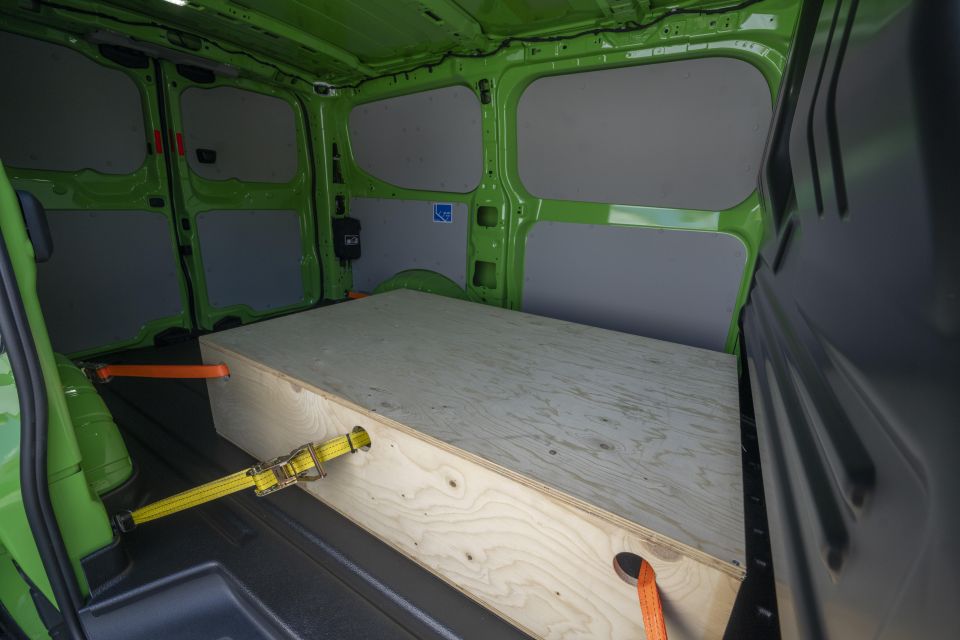
We drove a L1H1 van, code for the shortest length and the lowest roof height. Load volume with the bulkhead is 5.8m3; you don’t lose any load space by opting for the electric van over its diesel or plug-in hybrid models.
Payload is 968kg, while the largest payload figure in the E-Transit Custom range is 1011kg. Braked towing capacity remains the same as the other E-Transit Customs, however, at 2300kg.
| Dimensions | E-Transit Custom L1H1 | E-Transit Custom L2H1 |
|---|---|---|
| Maximum load height | 1433mm | 1433mm |
| Load length (to bulkhead) | 2602mm (van) 1604mm (double cab) | 3002mm (van) 2004mm (double cab) |
| Maximum load width | 1777mm (1392mm between arches) | 1777mm (1392mm between arches) |
| Load volume | 5.8m3 (van) 3.3m3 (double cab) | 6.8m3 (van) 4.3m3 (double cab) |
| Side door aperture width | 1030mm | 1030mm |
| Side door aperture height | 1301mm | 1301mm |
| Side door step height | 393mm-435mm | 393mm-435mm |
| Rear door aperture width | 1400mm | 1400mm |
| Rear door aperture height | 1316mm | 1316mm |
While the MS-RT treatment can be had with both diesel and plug-in hybrid power, we tested the E-Transit Custom MS-RT.
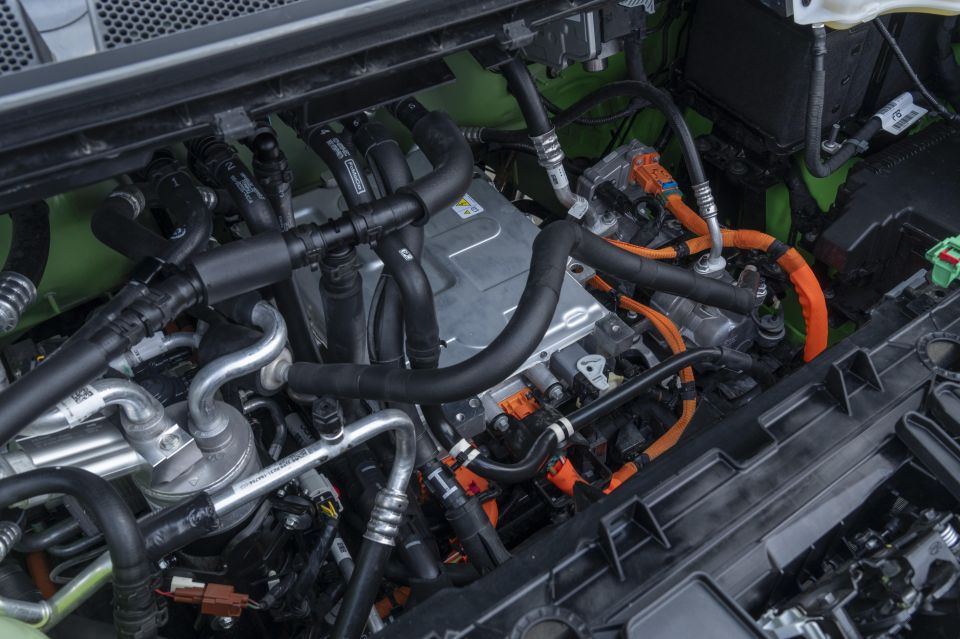
This is the only powertrain that gets more grunt over non-MS-RT models, with an extra 50kW on tap. That makes this the most powerful Transit Custom model ever.
You lose a bit of range with the MS-RT. Ford claims 275km of WLTP range with the E-Transit Custom MS-RT L1H1, but a Sport with the same body and the 160kW electric motor has 308km of range.
| Technical Specifications | Ford E-Transit Custom MS-RT |
|---|---|
| Drivetrain | Single-motor rear-wheel drive |
| Power | 210kW |
| Torque | 415Nm |
| Battery | 65kWh nickel manganese cobalt |
| Range (WLTP) | 275km |
| DC charging rate | 125kW |
| AC charging rate | 11kW |
| DC charge time (10-80 per cent) | Approx. 39 minutes |
| AC charge time (0-100 per cent) | Approx. 6.7 hours (11kW) |
| Payload | 968kg |
| Braked towing capacity | 2300kg |
| Gross vehicle mass (GVM) | 3225kg |
It might look wilder, but the MS-RT doesn’t drive appreciably different from the regular E-Transit Custom. Ford hasn’t detailed any mechanical changes apart from the extra power and a 50mm increase to track width.
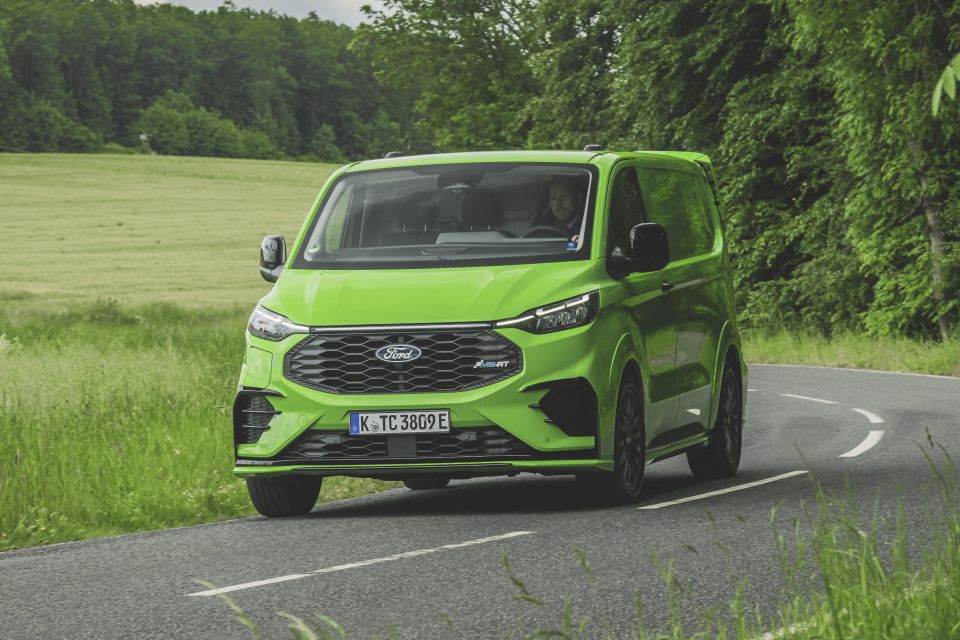
We only had a brief drive of the sportier electric van, with just under 30km of suburban driving with a bit of motorway thrown in.
Driving it back to back with a 160kW E-Transit Custom, we could feel the extra power of the MS-RT but it’s hardly transformative. After all, the 160kW E-Transit Custom feels plenty powerful already, particularly off the line.
Torque is also unchanged from all other E-Transit Custom models, at 415Nm.
Even in Sport mode, all 210kW of the MS-RT’s electric motor is delivered smoothly. All E-Transit Customs for now are rear-wheel drive, unlike their diesel and plug-in hybrid counterparts which are offered with front- and all-wheel drive, and feature a single electric motor at the rear axle.
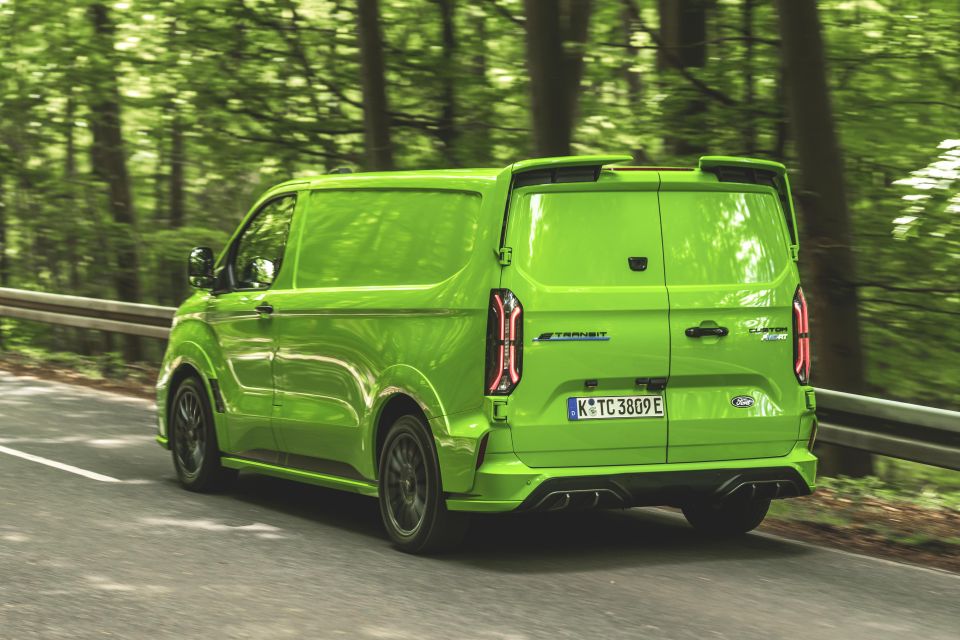
We’re glad Ford went down this route, as it means there’s no annoying front wheelspin to deal with, something that likely would have been the case had Ford employed a front-mounted electric motor.
The MS-RT feels nice and stable at highway speeds, and isn’t fazed by crosswinds. The steering is light, making manoeuvring through narrow alleyways and tight parking lots easy, and the wheel itself is a tactile delight.
Still, while the steering is car-like and the electric motor powerful, this still feels like a van to drive. A nice van, yes, but not some quasi-Focus RS-type super van as the styling would suggest.
As we noted in our E-Transit Custom review, the ride is a touch firm and lumpy at times even on smoother German pavement, although it stops short of being uncomfortable. We’re keen to see how it feels in more extensive testing on our generally worse roads here in Australia.
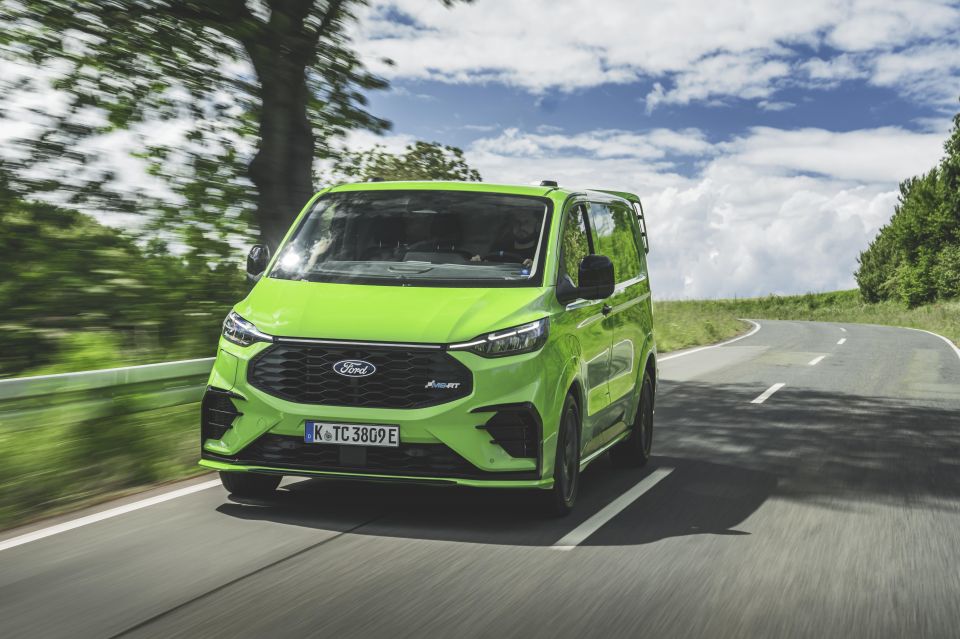
Where expert car reviews meet expert car buying – CarExpert gives you trusted advice, personalised service and real savings on your next new car.
Ford developed independent rear suspension for the E-Transit Custom, and ended up rolling it out across the entire second-generation Transit Custom range, so it feels nice and tied down at the rear.
It’s worth noting Ford loaded each cargo van at the Transit Custom launch event with a pallet weighing roughly half the vehicle’s payload. That means we were hauling around roughly 500kg of ballast.
The electric motor is quiet, making for a much more pleasant soundtrack than the clattery diesel.
The van gets a bit noisy at higher speeds due to the wind whipping around the large mirrors, and exhibits the typical boominess you get with vans.
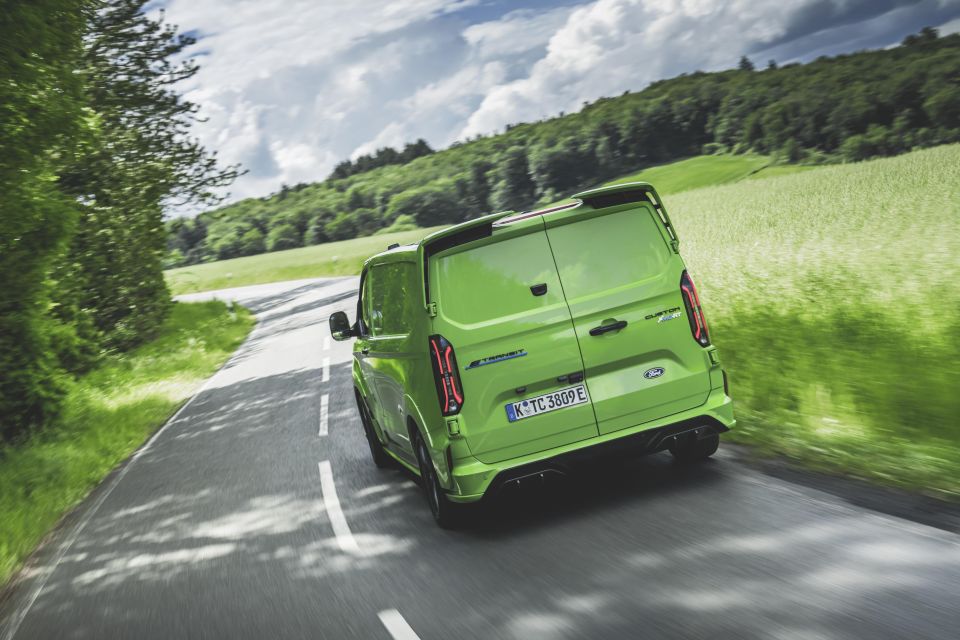
There’s a one-pedal drive mode, activated via the touchscreen, that can bring the vehicle to a complete stop.
There’s no lane-centring, but the lane-keep assist will smoothly intervene to keep you within your lane, even on winding roads.
The traffic sign recognition also works well, and there’s intelligent speed limit assist which will automatically adjust the vehicle’s speed when you have adaptive cruise control on and the posted limit changes.
We saw average energy consumption of 23kWh/100km, more than the 20kWh/100km figure we recorded across a similar drive loop in a 160kW E-Transit Custom. However, we were driving the MS-RT in Sport mode.
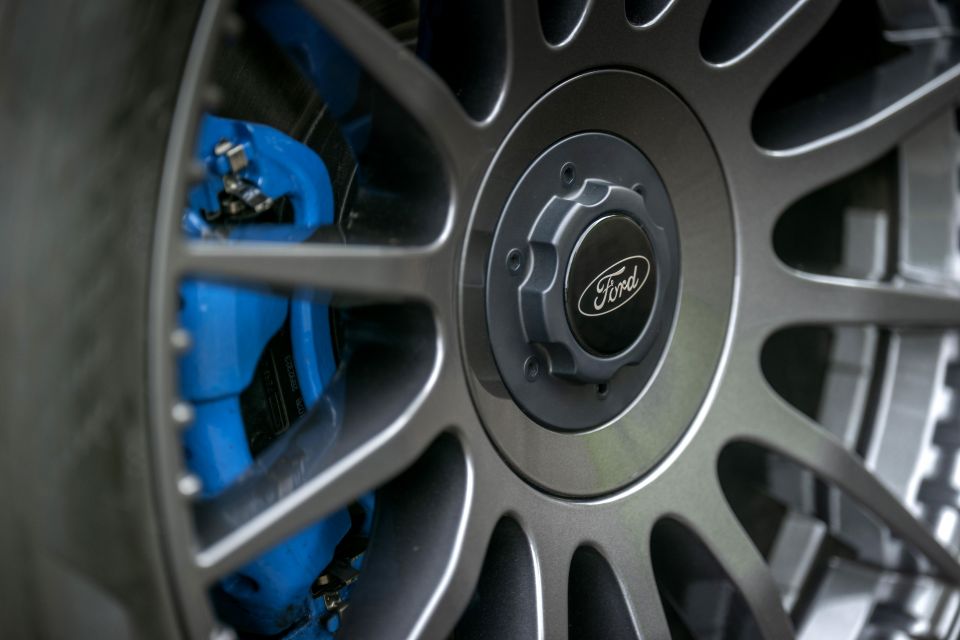
Standard equipment on MS-RT models includes:
Our tester also had optional satellite navigation and a powered side load door.
The E-Transit Custom hasn’t been crash-tested by ANCAP or Euro NCAP, although the related diesel version received a Platinum rating from Euro NCAP in testing of its active safety technology.
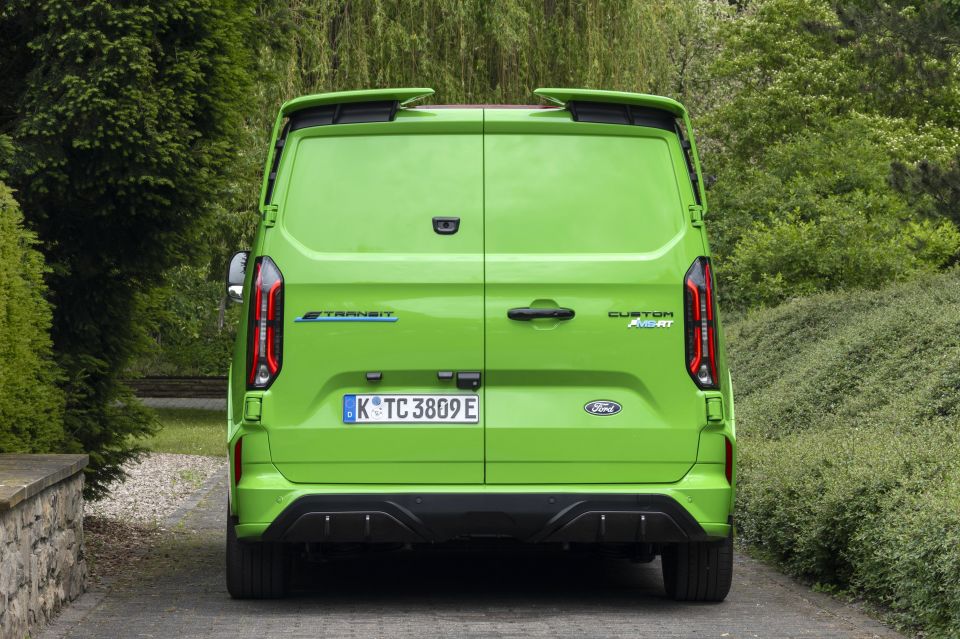
Standard safety equipment on the MS-RT includes:
It’s also available with:
We bemoan Ford Australia’s inability to bring any number of awesome overseas products here, including the Maverick, Bronco, updated Puma and Escape, F-150 Lightning and hybrid… [deep breath]… petrol Explorer, electric Explorer… well, you get the picture.
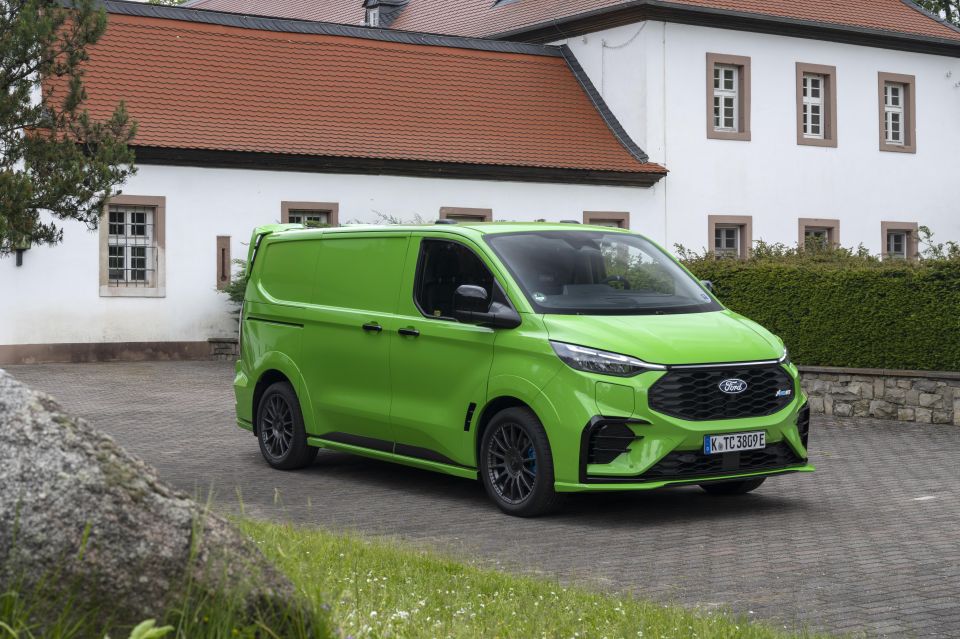
While the E-Transit Custom MS-RT is a charming vehicle, we’re not all that sad to hear it’s not coming here because it’s such a niche product.
In ute-mad Australia, we can’t imagine there are many buyers for a be-spoilered, body-kitted mid-sized van.
The extra power in the electric MS-RT is nice, but it’s not as though the regular E-Transit Custom was left wanting for grunt. And the tradeoff with this added performance is reduced range.
Whether you find the MS-RT to be a cool-looking bit of kit or the automotive equivalent of your dorky uncle dressing up as Lil Nas X, however, you can’t argue with this: this racy-looking Ford helps make the automotive landscape and the rather dull van market just that little bit more interesting.
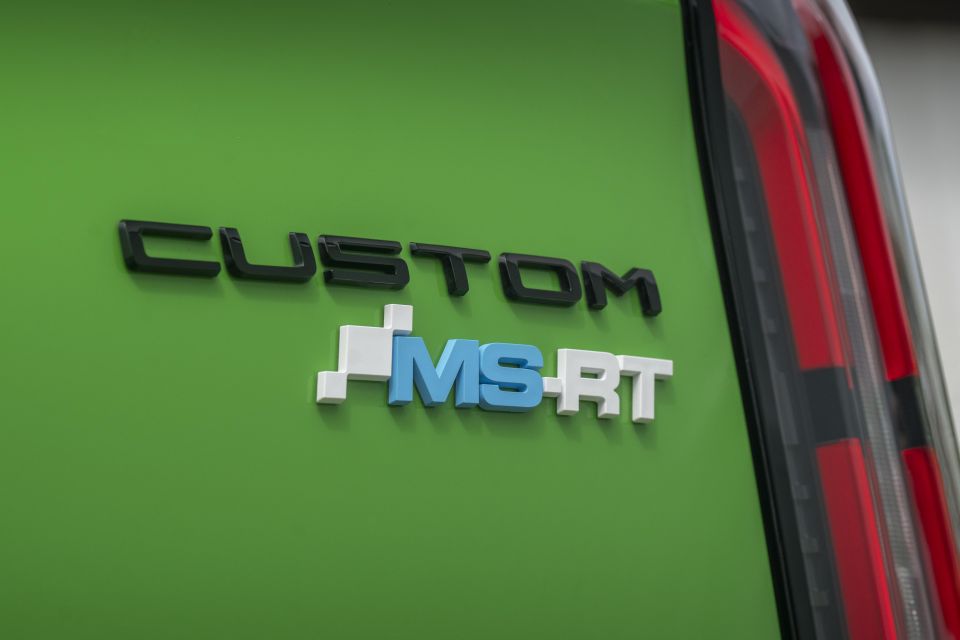
Click the images for the full gallery
MORE: Buy a Ford Transit Custom MORE: Everything Ford Transit Custom
Where expert car reviews meet expert car buying – CarExpert gives you trusted advice, personalised service and real savings on your next new car.
William Stopford is an automotive journalist based in Brisbane, Australia. William is a Business/Journalism graduate from the Queensland University of Technology who loves to travel, briefly lived in the US, and has a particular interest in the American car industry.


Dave Humphreys
5 Months Ago
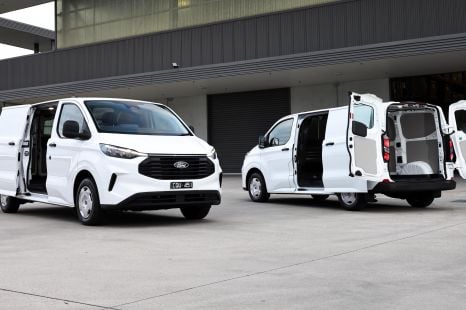

Max Davies
5 Months Ago


Josh Nevett
4 Months Ago
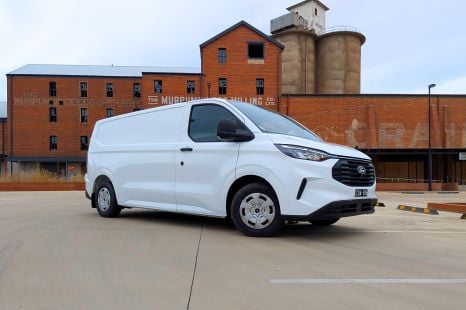

William Stopford
3 Months Ago
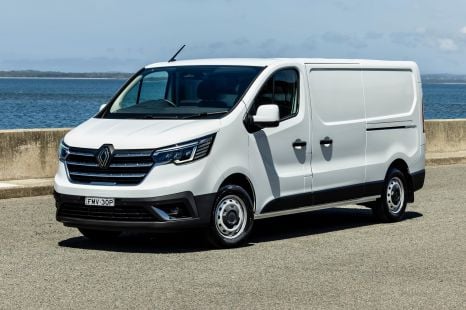

Max Davies
3 Months Ago
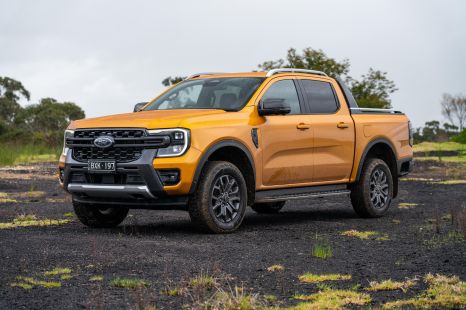

William Stopford
2 Months Ago